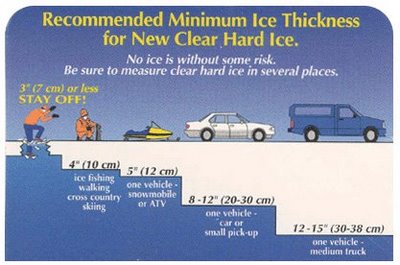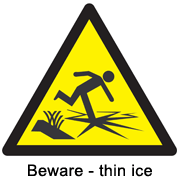Ice Safely for Ponds and Lakes
Source: orlandfire.org
Ice Safety – Enjoying Your Time On The Ice
Last month I heard of several people falling through the ice. Two people in Massachusetts recently fell through ice and died. This article will focus on ice safety and educate you on the proper thickness ice needs to be.
My son has a friend who lives on a pond and they are always playing and skating on the pond ice. This and the news above made me curious and motivated me to find out what is considered “safe ice?”
No matter what you are planning to do on the ice – like fishing, snowmobiling, skating or just walking, it’s important to do some checking yourself before you go out on it.
Several factors affect the safety of ice, such as temperature, snow cover and currents. A very important factor is the actual ice thickness.
Checking the thickness of the ice:
There are many ways to do this but being a carpenter, you guessed it, I’m going to check the ice using carpentry tools.
With a cordless drill and a long, 8′ wood auger bit, you can drill through eight inches of ice quickly.
Use a 1/2″ or slightly larger bit.
It’s important to use a wood auger bit since they have a spiral called a “flute” around the shaft that will pull the ice chips out of the hole and help keep it from getting stuck, similar to how an ice auger works.
 Pics and Source: http://www.dnr.state.mn.us/
Pics and Source: http://www.dnr.state.mn.us/
Ice Thickness Rules of Thumb:
* 2 inches – STAY OFF
* 4 inches of ice for a walking individual
* 6 inches of ice for a snowmobile or ATV
* 8-12 inches of ice for a car or small pickup
* 12-15 inches of ice for a medium pickup truck.
What if you fall in?
1. Try not to panic.
2. Turn toward the direction you came.
3. The safest place to pull yourself back up on the ice is the last place you stepped before you went through the ice.
4. Place your hands and arms on the unbroken surface of the ice.
5. Work your way up by kicking your feet.
6. Once you are lying on the ice, roll away from the weak or broken ice, don’t attempt to stand up.
What if my friend falls through thin ice?
1. Keep calm, have a plan.
2. Do not run out to assist the victim. You can go from rescuer to victim in a short second.
3. Reach the victim with a long pole, board, rope, blanket or cables.
4. Throw the victim a life jacket, empty water jug, or other buoyant object.
5. Build a human chain in which rescuers lie on the ice with each person grasping the feet of the person in front.











